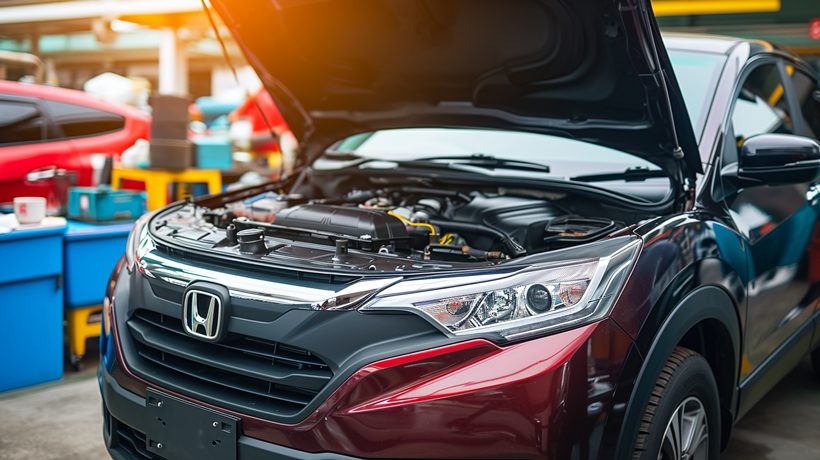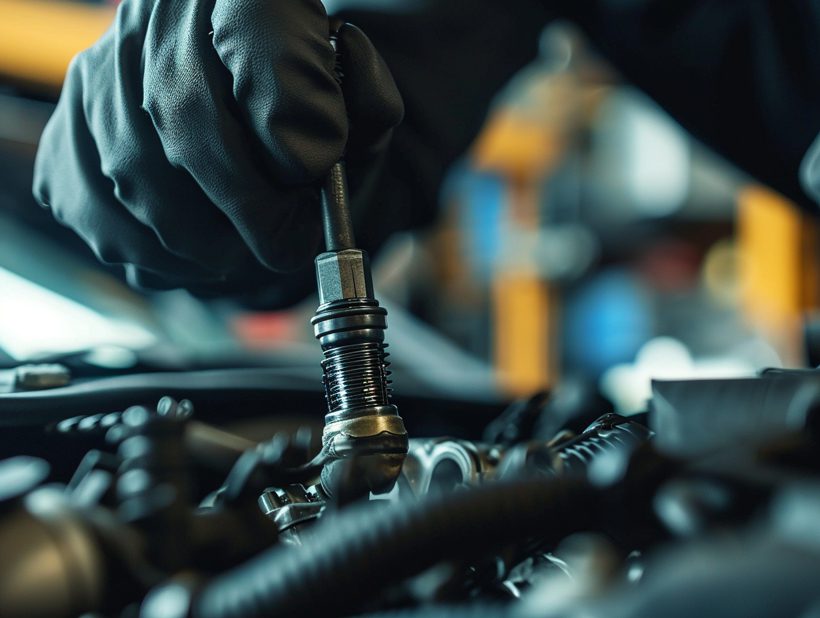Ever noticed your car veering to one side as you drive? It’s not just a nuisance; it’s a sign that something’s off. We’ve all been there, gripping the steering wheel a little tighter to keep our car on a straight path. But what causes this frustrating issue?
Misalignment and suspension troubles are often the culprits behind a car’s tendency to pull. These issues can sneak up on us, turning our smooth ride into a constant battle with the steering wheel. Let’s dive into what might be happening under the hood and beneath the car that’s throwing us off course.
Understanding the root of the problem is key to getting back that perfect drive. We’re here to break down the common causes and what they mean for your car’s performance. Stick with us as we explore how to diagnose and fix a car that pulls to the side, ensuring your safety and comfort on the road.
Understanding Car Pulling
When we’re dealing with a vehicle that’s veering to one side, it’s vital to understand the nuances behind this behavior. Car pulling is an indication that our vehicle isn’t operating as it should be, and identifying the specific issue can be the difference between a quick fix or a costly repair down the line.

There are several key reasons why our car might start to pull:
- Tire Pressure: Uneven tire pressure is a common culprit that’s often overlooked. It’s important to check that all tires are inflated to the manufacturer’s recommended levels.
- Wheel Alignment: Proper alignment is crucial for the car to move straight without pulling. Misaligned wheels can lead to uneven tire wear, impaired handling, and a pull to one side.
- Brakes: If one side’s brakes are engaging more than the other, this could cause the car to pull. It’s a safety issue that requires immediate attention.
- Suspension System: Components of the suspension system such as shock absorbers and struts, when worn out, can cause pulling. It‚Äôs essential to have these inspected if we’re experiencing pulling issues.
While these are common issues, diagnosing the exact cause can be tricky. It might be tempting to try a DIY solution, but unless we’re confident in our car repair skills, it could be more effective to seek professional assistance. Experts have the tools and knowledge to pinpoint the problem and suggest the best course of action.
Maintaining our vehicle’s health encompasses not only addressing visible problems but also preventing potential ones. Regular check-ups that include tire inspections, wheel alignment, and brake system assessments are integral to keeping our drive smooth and safe. We’ll want to keep this in mind because prevention is always better than cure, especially when it comes to something as important as our car’s handling and our safety on the road.
Causes of Car Pulling
When our vehicle starts pulling to one side, it can be not only annoying but also potentially dangerous. Understanding the root causes is essential for us to address the problem effectively. Here, we’ll delve into the common issues that might make a car veer off course.
- Tire Pressure: Uneven tire pressure is a frequent culprit. If one tire is inflated more than the others, it can cause the car to pull towards one side. It’s essential to check our tire pressure regularly and ensure they are all equally inflated to the manufacturer’s recommended levels.
- Wheel Alignment: Proper alignment is crucial for the balanced handling of our vehicle. If the wheels are not aligned correctly, it can lead to the car pulling in one direction. Misaligned wheels often result from hitting potholes or curbs. We should have our wheel alignment checked:
| Condition | Suggested Check Frequency |
|---|---|
| Normal Driving | Every 6,000 Miles |
| After a Sharp Impact | Immediately |

- Brake Problems: If there’s an issue with our braking system, such as a stuck caliper or uneven brake pad wear, it might cause the car to pull on one side when we apply the brakes. This is a safety concern and should be inspected as soon as possible.
- Suspension Issues: The suspension system’s job is to support the vehicle and absorb shocks from the road. Over time, components such as ball joints, tie rods, or control arms can wear out or become damaged. These issues can lead to our car pulling to one side while driving.
If we’re experiencing our car pulling to one side, a methodical check of these components can help us pinpoint the issue. We should start with the most straightforward checks, like tire pressure and work our way through to more complex systems like the suspension. Attention to these details not only helps maintain our car’s performance but also ensures our safety on the road. Regular maintenance checks at intervals recommended by the vehicle manufacturer or trusted mechanic can bring potential issues to light before they lead to more significant problems.
Alignment Issues
When we’re driving, we often take for granted that our car will travel in a straight line without us having to make constant adjustments. However, proper wheel alignment is critical for our vehicle to perform this basic function. Misalignment can lead to the car pulling to one side, and it’s a problem we shouldn’t ignore. There are several signs and consequences of alignment issues that we need to look out for.
Signs of Misalignment
- Uneven tire wear: One of the most noticeable signs is uneven wear on the tires. If we see that tires are wearing down faster on one side, this is often a telltale indicator that the alignment is off.
- Steering wheel off-center: If we’re driving straight but the steering wheel isn’t centered or it vibrates, this could also signify an alignment problem.
- Pulling to one side: The car’s tendency to drift or pull to one side, even on a flat and straight road, can suggest the wheels aren’t properly aligned.
Causes of Wheel Misalignment
Several factors can throw a car’s wheels out of alignment:
- Impacts: Hitting a pothole or a curb can jolt our car’s suspension system, leading to misalignment.
- Worn parts: Over time, the car’s suspension components can wear out and lead to alignment issues.
- Lifting or lowering the vehicle: Any alterations to the vehicle’s height can affect its alignment.
Maintenance and Prevention
It’s vital to have our tires and alignment checked regularly. The following table provides a recommended schedule for wheel alignment checks.
| Frequency | Description |
|---|---|
| Every 6,000 Miles | Basic check-up if no issues are noticed |
| After an Impact | Check if you’ve had a significant jolt |
| With New Tire Change | Always get the alignment checked and adjusted |
Regular maintenance checks will help identify early signs of misalignment and prevent more significant issues in the future. Taking our car to a trusted mechanic should be a part of our routine vehicle care, ensuring our safety and the longevity of our car’s components. Remember, well-aligned wheels are not just about a smoother drive; they can also help improve our vehicle’s fuel efficiency and tire life.
Suspension Problems
When we experience our car pulling to one side, it’s natural to suspect alignment issues; however, suspension problems can also be a major contributor. The suspension system is complex, consisting of various components, which include shocks, struts, and springs that can affect your car’s stability. If any one of these parts is failing, it can lead to an imbalanced ride and cause the car to pull.
Several common signs indicate a suspension problem:
- A rough or bumpy ride;
- A car that dips or “nose dives” when stopping;
- Uneven tire wear;
- Greasy or oily shocks or struts.
If you’re noticing your car exhibiting any of these symptoms, it’s vital to inspect your suspension system. Worn out shocks or struts are often the culprits for a rough riding experience. When they can’t effectively absorb the impact of the road, it doesn’t take much for the entire vehicle to start veering to one side or the other.

Tire wear can also offer a clue about suspension issues. Uneven wear might suggest that the suspension isn’t holding the car evenly, thereby placing unequal pressure on the tires. Below is a quick reference for the types of tire wear we might expect to see when suspension troubles are present:
| Tire Wear Type | Likely Suspension Issue |
|---|---|
| Inside Wear | Weak Springs or Damaged Struts |
| Center Wear | Overinflated Tires Compensating for Suspension Problems |
| Outer Wear | Bent or Worn Suspension Parts |
Remember that preventative maintenance is the key to avoiding extensive suspension damage. Regular inspections and addressing small issues promptly can save us from costly repairs down the line. Shocks and struts should be checked at least once a year or every 12,000 miles.
We shouldn’t overlook the importance of the control arms, ball joints, and bushings. When they’re damaged or worn, they can significantly affect the alignment and stability of the car. Routine checks and replacements of these parts will go a long way in maintaining a smooth, straight drive.
Diagnosing and Fixing Car Pulling
When we’re faced with a car that pulls to one side, it’s critical to perform a step-by-step diagnosis to pinpoint the issue. Let’s walk through the process to identify and rectify what’s causing our vehicle to veer off course.
First off, checking the tire pressure is essential. Uneven tire pressure is a common culprit and an easy fix. We should ensure all tires are inflated to the manufacturer’s recommended level. If the tires have correct pressure and the problem persists, the next step is to look at the wheel alignment. Precise alignment ensures uniform steering and tire longevity. At a trusted auto shop, technicians can measure each wheel’s angles to see if they meet the recommended specifications.
If the alignment is accurate and there’s still a pulling issue, brake inspection is in order. Sometimes a sticking caliper or uneven brake pad wear can cause the vehicle to pull. In that case, brake components may need cleaning, lubrication, or replacement.

Concerning suspension issues, these components require a thorough examination:
- Shocks and struts
- Control arms
- Ball joints
- Bushings
These parts should show no signs of damage or excessive wear. If they do, it’s likely they’re affecting the car’s stability and causing it to pull.
Here are the usual suspects when we’re getting down to specifics:
| Component | Symptoms | Frequency Check |
|---|---|---|
| Tires | Uneven wear, bulges, low pressure | Before each drive |
| Wheel Alignment | Off-center steering wheel | Every 6,000 miles |
| Brake System | Squeaking, grinding noises | Every service |
| Suspension Parts | Unusual noises over bumps | Annually |
After attending to issues identified through our checks, it advisable to take the car for a test drive to ensure that the problem has been resolved. Regular maintenance checks remain a priority to avoid these issues from cropping up again. Keeping our vehicle in optimal condition guarantees a smoother, safer driving experience for us all.
Conclusion
We’ve explored the various reasons why our cars might start pulling to one side, from tire pressure imbalances to more complex suspension issues. It’s clear that regular maintenance is key to keeping our vehicles running smoothly and safely. By staying on top of tire pressure, alignment, and suspension checks, we not only prevent pulling but also contribute to our car’s longevity and performance. Remember to address any signs of misalignment or suspension wear promptly. Doing so will save us time and money in the long run and keep us safe on the road. Let’s make sure our next drive is as straight as an arrow by giving our cars the care they deserve.
